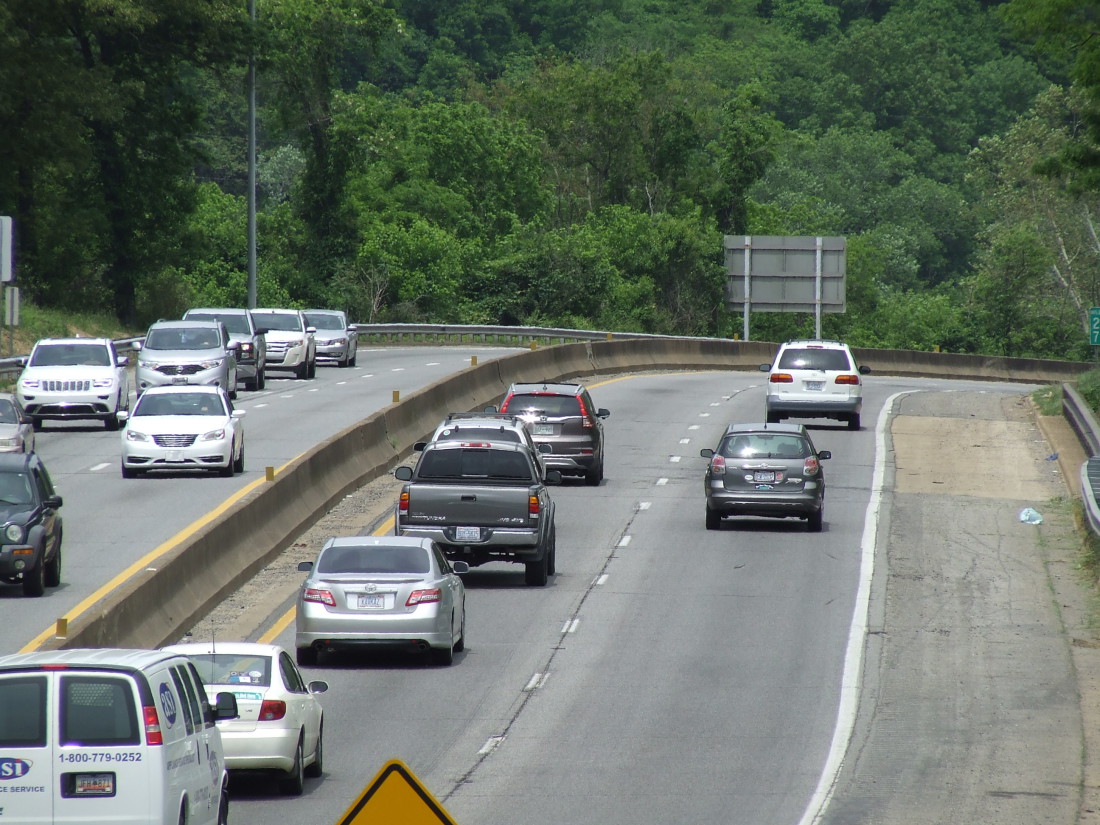When it comes to ensuring clean air, according to the state Department of Environmental Quality, Western North Carolina has some breathing room. As of Saturday, Dec. 1, vehicle owners in three of the region’s counties — Haywood, Henderson and Rutherford — will no longer have to submit their cars and light-duty trucks to an annual emissions inspection.
The change comes as part of a broader loosening of the state Inspection and Maintenance Program approved by the General Assembly’s Regulatory Reform Act of 2016-17. A total of 26 mostly rural counties will be removed from the I/M program; however, emissions inspections remain in place for Buncombe and 21 additional counties. The three other counties bordering Buncombe — Madison, McDowell and Yancey — have never required the inspections.
Since the program was first implemented in 1982, says DEQ Division of Air Quality spokesperson Sharon Martin, changes in technology and regulations have made these inspections unnecessary in many parts of the state. “We’ve made such improvements in North Carolina’s air quality that the removal of these inspections is not a negative impact,” she explains.
While the U.S. Environmental Protection Agency, which had to approve the rule change, projects that removing the 26 counties from the I/M requirements will lead to an additional 611 tons of nitrogen oxide (NOx) emissions annually, it notes that North Carolina has reduced its overall NOx emissions by nearly 12,000 tons per year from 2007 levels. Therefore, the relaxed inspections program “will not interfere with the state’s obligations” for clean air.
Pick and choose
Carol Kemker, deputy director for the Air, Pesticides and Toxics Management Division with the EPA’s Southeast office, says the Clean Air Act gives individual states significant flexibility on how to achieve federally mandated air quality goals. That approach allows different governments to focus on different problems, she explains, with an end result of what she calls “wild success” in achieving federal standards.
North Carolina, for example, targeted its large array of coal-fired power plants through the Clean Smokestacks Act of 2002. Within seven years, the law slashed the state’s annual NOx emissions by 189,000 tons, a 77 percent reduction from 1998 levels. This change alone, noted the EPA in its commentary on the vehicle inspections changes, was sufficient for the state to meet federal emissions limits.
But other changes have reduced the impact of the I/M program itself. Turnover in the state’s vehicle fleet, Kemker says, has replaced older cars and trucks with cleaner, newer models, and stricter federal fuel standards have further cut emissions from the gas those vehicles burn. Total vehicle miles traveled in the 26 counties to be removed from the program, as determined from car registration data, also decreased.
“The I/M controls aren’t being relied on to maintain the national ambient air quality standards, and I mean any of the national ambient air quality standards,” Kemker says. For pollutants such as ozone, lead, carbon monoxide and others, she explains,“North Carolina doesn’t need this program to maintain the healthy levels.”
Fee for all
Drivers in the 26 counties will still have to have their vehicles inspected annually for safety, but they will no longer pay the $16.40 emissions inspection fee. Across Haywood, Henderson and Rutherford counties, which together conducted approximately 139,000 vehicle inspections in the 2015-16 fiscal year, that adds up to a savings for vehicle owners of nearly $2.28 million.
Local auto shops will take the biggest hit from this change: According to the legislative fiscal note accompanying the Regulatory Reform Act, private inspection stations receive $11 for each emissions inspection. That works out to nearly $1.53 million in annual revenue WNC mechanics will no longer collect.
But agencies at the state level will also be affected. The Division of Air Quality receives 65 cents of every emissions inspection fee, while the N.C. Department of Transportation’s Highway Fund receives $4.75.
In an email to Xpress, Martin estimated that her division will experience a $1.1 million reduction in annual revenue due to the removal of the 26 counties from the I/M program. “Since the changes have been in process for several years, DAQ has had time to prepare for the reduced revenues and make adjustments to spending levels to account for that reduction going forward,” she wrote.
However, Martin did not respond to a request for clarification of what programs had their funding cut or whether the department had sought an additional allocation from the General Assembly. According to the N.C. Open Budget website, the DEQ’s Air Quality Control fund received roughly $5.58 million in fiscal year 2017; the reduction in I/M fee revenue thus represents nearly 20 percent of that budget.
Steve Abbott, a spokesperson for NCDOT, says the Highway Fund would receive about $4.6 million less annually due to the inspection changes, out of roughly $1.7 billion in Highway Use Tax and fee revenue. He adds that the General Assembly has slightly raised NCDOT’s Highway Fund allocation to cover the difference.
Rolling along
For now, Martin says, the state has no plan to remove the remaining 22 counties from the I/M program. However, the DEQ has submitted a request to change the model year coverage for vehicle inspections. Instead of applying to all cars and trucks manufactured after 1996, inspection coverage would move to a “rolling 20-year window” measured from the present.
That proposal is still under EPA consideration, Kemker says. But she explains that further alterations to the inspection program are a sign of North Carolina’s shifting regulatory needs. “As technology changes and the way we live and move around the country changes, our air quality plans can evolve.”




I wish Buncombe County would be removed. This is a joke. The cars that need to be monitored are the ones that are exempt because of age.
And coal rollers!